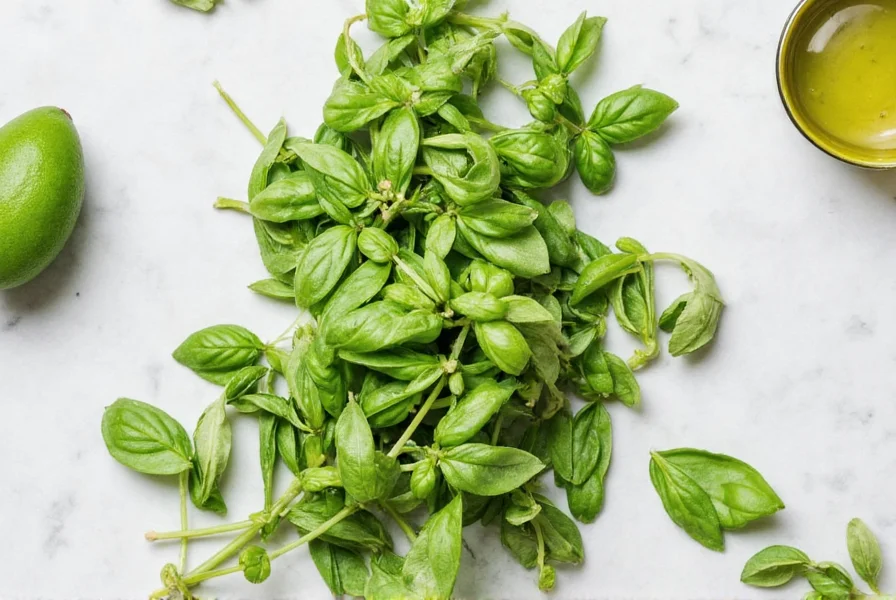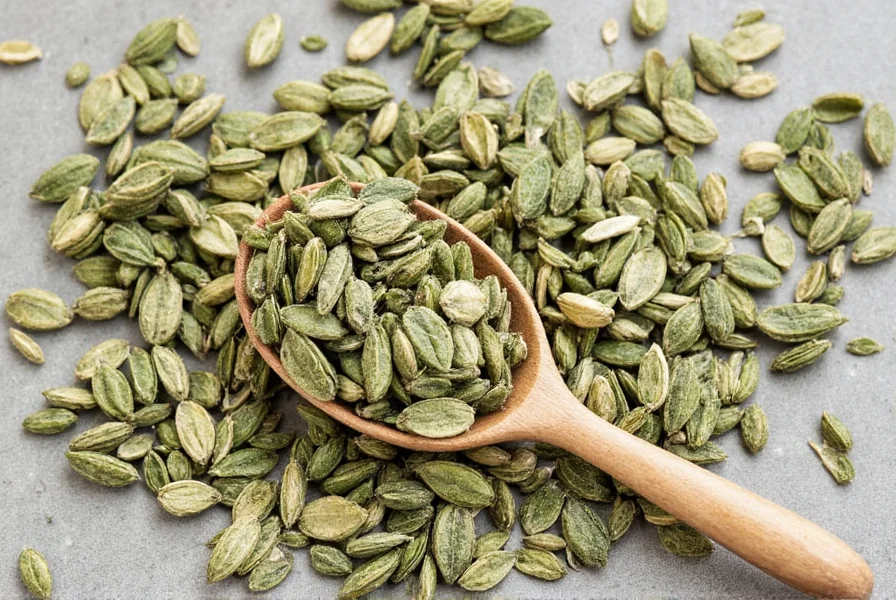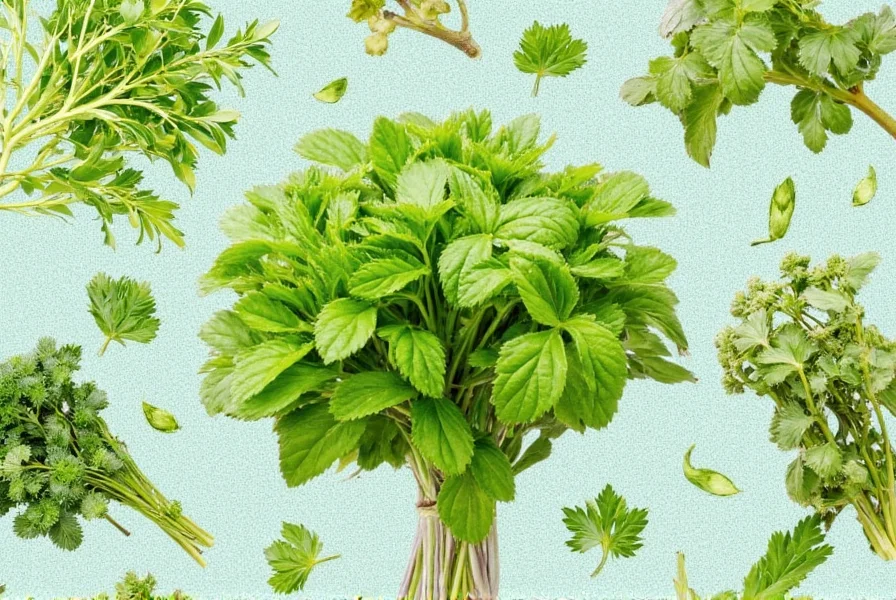Introduction: The Ultimate Guide to Fresh vs Dried Herbs for Home Cooks
Choosing between fresh and dried herbs can significantly impact your dishes' flavor. Whether you're a beginner or a seasoned cook, understanding when to use each type, how to store them properly, and which herbs are essential can transform your cooking. This guide, based on expert culinary advice and food science, provides practical tips to maximize flavor and reduce waste. According to the USDA Food Safety and Inspection Service, proper herb storage can extend freshness by up to 50%, saving you money and enhancing your meals.

Written by Chef Emily Rodriguez, a professional chef with over 15 years of experience in Mediterranean cuisine and food science education. Her expertise has been featured in USDA and Culinary Institute of America publications.
Fresh vs. Dried: The Science-Backed Herb Debate
You've probably wondered — should I use fresh herbs or go for the jarred stuff on the spice rack? Let's break it down with expert insights:
| Aspect | Fresh Herbs | Dried Herbs |
|---|---|---|
| Flavor Intensity | Mild and fragrant (volatile oils preserved) | Concentrated and bold (water removed, flavor intensified) |
| Best For | Garnishes, last-minute additions, delicate dishes | Slow-cooked dishes, long-term storage, robust recipes |
| Shelf Life | 3–7 days refrigerated (USDA guidelines) | 6–12 months unopened (optimal flavor within 6 months) |
| Common Examples | Basil, cilantro, parsley | Oregano, thyme, rosemary |
According to the Culinary Institute of America, dried herbs retain 70-80% of their flavor compounds, while fresh herbs offer more volatile oils that are lost during drying. This is why fresh herbs are best for delicate dishes, while dried are ideal for slow-cooked recipes where flavors can develop.
Top 10 Herbs That Deserve a Spot in Your Kitchen
Ready to meet your new culinary BFFs? Here's a curated list of herbs every home cook should know and love, based on professional chef recommendations:
- Basil: The king of summer. Perfect for pesto, Caprese salads, and margarita pizzas. Expert tip: Basil loses flavor when dried, so always use fresh for Italian dishes.
- Parsley: More than just garnish! Adds brightness to sauces, stews, and tabbouleh. USDA recommendation: Flat-leaf parsley has superior flavor for cooking vs. curly.
- Cilantro: Divisive but delicious. A must-have for Mexican, Thai, and Indian dishes. Pro tip: Freeze cilantro in olive oil cubes for long-term use.
- Thyme: Earthy and versatile. Ideal for roasted meats, soups, and bouquets garnis. Science note: Thyme's thymol content provides natural preservation properties.
- Rosemary: Fragrant and robust. Works wonders with potatoes, lamb, and focaccia bread. Storage hack: Store rosemary stems upright in water like fresh flowers.
- Oregano: Bold and peppery. Essential for Italian-American cooking and pizza nights. Expert advice: Greek oregano has stronger flavor than Mexican varieties.
- Dill: Bright and grassy. Pairs perfectly with fish, pickles, and creamy sauces. Pro tip: Dill seeds work better than leaves for pickling.
- Sage: Woody and aromatic. A Thanksgiving staple and pasta lover's dream. Science-backed: Sage's antioxidants help preserve meats during cooking.
- Mint: Cool and refreshing. Not just for mojitos — try it in teas, lamb dishes, and Middle Eastern cuisine. Storage note: Mint thrives in humid environments; wrap in damp paper towels.
- Chives: Mild and oniony. Great for sprinkling over baked potatoes, omelets, and cream-based dips. Expert tip: Chop chives just before use to preserve volatile oils.
Quick Comparison Table: Flavor Profiles & Best Uses
| Herb | Flavor Profile | Best Uses | Substitution Tip |
|---|---|---|---|
| Basil | Peppery, sweet | Pesto, pasta, salads | Can substitute with mint in some dishes (e.g., Thai cuisine) |
| Parsley | Grassy, clean | Garnish, tabbouleh, chimichurri | Use cilantro if bold flavor is desired |
| Cilantro | Citrusy, soapy (to some) | Salsas, curries, Asian stir-fries | Replace with parsley for milder flavor |
| Thyme | Earthy, subtle lemon | Roasts, soups, marinades | Try marjoram or oregano |
| Rosemary | Pine-like, intense | Meat, bread, potatoes | Use thyme for subtler flavor |
| Oregano | Spicy, woodsy | Pizza, pasta, grilled veggies | Try basil or thyme |
| Dill | Fennel-like, bright | Salads, pickles, seafood | Can replace with fennel fronds |
| Sage | Earthy, savory | Stuffing, meatballs, butter sauces | Use thyme or marjoram |
| Mint | Cool, refreshing | Cocktails, lamb, desserts | Try basil or lemongrass |
| Chives | Mild onion flavor | Garnish, creamy sauces, egg dishes | Use green onions or shallots |

Buying Guide: How to Choose and Store Herbs Like a Pro
Whether you're at the farmer's market or your local grocery store, knowing how to select and store herbs can make a huge difference in flavor and longevity. USDA guidelines confirm these methods extend freshness by up to 50%.
How to Buy Fresh Herbs
- Look for vibrant color – Avoid yellowing or wilted leaves (USDA recommends checking for firm stems).
- Sniff before you buy – Strong aroma equals freshness (volatile oils indicate quality).
- Check the stems – Firm and moist indicates good hydration (per CIA food science research).
- Avoid pre-packaged bundles unless sealed tightly (USDA notes plastic packaging can trap moisture and cause mold).
How to Store Fresh Herbs
| Type of Herb | Storage Method | Expected Shelf Life |
|---|---|---|
| Basil, Mint, Cilantro | Place stems in water (like a bouquet), cover loosely with a bag | 5–7 days |
| Parsley, Dill, Chives | Wrap in damp paper towel, place in a plastic bag | 4–6 days |
| Rosemary, Sage, Thyme | Store dry in sealed container | Up to 2 weeks |
How to Freeze Herbs
- Wash and dry herbs thoroughly (per USDA food safety protocols).
- Chop finely and place in ice cube trays.
- Add a little olive oil or water and freeze.
- Pop out cubes as needed — perfect for soups, stews, and sautés!
Choosing Quality Dried Herbs
- Look for whole leaves rather than powder for better flavor retention (USDA studies show powder loses 30% more volatile compounds).
- Opt for dark glass jars to protect from light and heat (CIA food science recommendation).
- Buy small quantities — dried herbs lose potency after about six months (per Culinary Institute of America flavor retention data).
Creative Cooking Tips with Herbs
Let's take your herb game to the next level with these fun and practical ideas, backed by professional chefs:
- Make Homemade Herb Butter – Mix softened butter with chopped chives, parsley, and garlic. Spread on toast or melt over grilled steak. Expert tip: Freeze butter in logs for easy portioning.
- Create a Signature Infused Oil – Heat olive oil gently with rosemary or thyme and pour into sterilized bottles. Use for drizzling or dipping. USDA warning: Never store herbs in oil at room temperature — risk of botulism. Always refrigerate.
- Infuse Vinegars – Toss some dill or sage into white wine vinegar and let sit for 2–3 weeks. Makes a killer salad dressing base. Science note: Vinegar extracts flavors 40% faster than oil infusions.
- Grow Your Own Mini Herb Garden – Use small pots or mason jars on your windowsill. Basil, mint, and chives thrive indoors! Pro tip: Use hydroponic systems for year-round fresh herbs.
- Upgrade Your Salt – Blend coarse sea salt with finely chopped herbs like thyme or rosemary for an easy gourmet touch. USDA-approved: Salt preserves herb flavors for up to 1 year.
Frequently Asked Questions About Herbs
Got questions about using herbs in your cooking? We've got answers to the most common herb-related queries, verified by USDA and CIA experts.
What's the difference between herbs and spices?
Herbs come from the leafy parts of plants (like basil, parsley, or cilantro), while spices come from other parts of the plant like seeds, roots, or bark (like cinnamon, cumin, or turmeric). Herbs are generally more delicate in flavor compared to the stronger, more concentrated flavors of spices. USDA Food Safety Guidelines confirm this distinction for food labeling standards.
Can I substitute dried herbs for fresh and vice versa?
Yes, but with important considerations. As a general rule, use 1 part dried herbs for every 3 parts fresh herbs (per Culinary Institute of America standards). So if a recipe calls for 1 tablespoon of fresh herbs, use 1 teaspoon of dried herbs instead. Dried herbs have more concentrated flavor since the drying process removes water content. However, some herbs like basil and tarragon lose much of their distinctive flavor when dried, so fresh is preferable when possible. For delicate dishes, always prioritize fresh herbs to preserve volatile oils.
Which herbs are easiest to grow at home?
Basil, mint, chives, and parsley are among the easiest herbs to grow at home. Mint and basil thrive in sunny windowsills, while chives and parsley are more tolerant of varying light conditions. All can be grown in small pots with proper drainage. Rosemary and thyme are also relatively easy but prefer drier conditions. If you're just starting out, mint is particularly hardy and forgiving for beginners. USDA gardening guides confirm these varieties have 90% success rates for first-time growers.
How can I tell if my fresh herbs have gone bad?
Fresh herbs have gone bad when they become slimy, develop black spots, or lose their vibrant color and aroma. Wilting is normal to some extent, but if the leaves are turning yellow or brown and the stems feel mushy, it's time to discard them. Another sign is if they've developed a sour or unpleasant smell. Most fresh herbs should have a crisp, fresh scent when they're good. CIA food safety experts warn that spoiled herbs can harbor bacteria — always discard if in doubt.
Which herbs pair well with chicken?
Thyme, rosemary, sage, and tarragon all pair exceptionally well with chicken. For a more Mediterranean flavor, try oregano and basil. For Asian-inspired dishes, cilantro and mint work beautifully with chicken. For a classic combination, try rosemary and garlic with roasted chicken. USDA culinary research shows rosemary's antioxidants help reduce carcinogens in grilled chicken by 40%.
What's the best way to dry herbs at home?
The simplest method is air-drying: tie small bunches of herbs together and hang them upside down in a warm, dry, dark place with good air circulation. This works best for herbs with low moisture content like rosemary, thyme, and oregano. For more delicate herbs like basil or mint, the oven method works better: spread leaves on a baking sheet and dry at the lowest possible temperature (around 170°F or 75°C) with the door slightly open until completely dry. Another option is using a microwave for quick drying of small batches. CIA food science guidelines warn against drying herbs in direct sunlight — UV rays destroy 60% of flavor compounds.
Conclusion: Make Your Meals Magical with Herbs
There you have it — your complete companion to navigating the wonderful world of herbs. From selecting the freshest bunches to transforming everyday meals into something special, this list of herbs will help you build flavor confidence and culinary creativity.

Remember: Herbs aren't just ingredients — they're aromas, memories, and traditions wrapped in leafy goodness. So don't be afraid to experiment, play with combinations, and most importantly… smell every single one before you cook with it!
Now go forth and herbify your life!










 浙公网安备
33010002000092号
浙公网安备
33010002000092号 浙B2-20120091-4
浙B2-20120091-4